Photo albums combine immediate proximity and boundless distance. They are tangibly close, but suggest an intangible vastness. Photo albums are timeless and yet they capture a concrete time. At the same time, they recall a past, a snapshot that awakens a memory, but are seen through the eyes of the present. A photo album is able to tell a story that depicts the past and foreshadows a future, a future that one seemingly inhabits whilst viewing the album. Photographs are silent, yet they express numerous characteristics. Although they may appear highly specific, the observer perhaps lacks the context that memory has lost, allowing only fragments to be grasped.
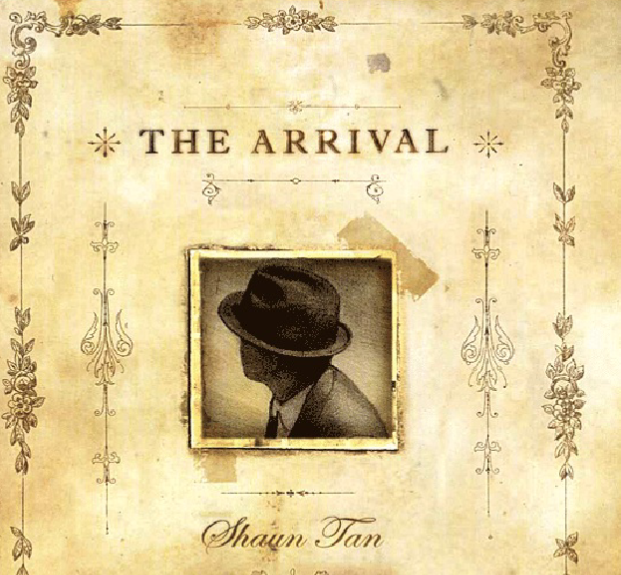
Shaun Tan, author of the graphic novel The Arrival, asserts that photo albums “inspire[es] memory and urg[e] us to fill in the silent gaps, animating them with the addition of our own storyline” (Essays – Strange Migrations – Shaun Tan). Originally planning a picture book in which an elderly migrant reflects on his past experiences, Tan discarded this idea in favour of a silent protagonist who migrates to a distant, new and distant place with fantastical attributes (Ling 46-47). Whilst the sepia tones are the main feature to allude to the nature of old photographs, the foreign land involves Tan’s own interest to “depict figures in alienating landscapes” in his illustrations (45), as well as a presumably autobiographical related curiosity. As Tan writes on his website, the alienated place where he spent his childhood gave him “a feeling of being somewhere and nowhere at the same time” (Essays – Strange Migrations – Shaun Tan).
Given the seemingly opposed yet unitary nature of a photo album’s ability to evoke a sense of a liminal place, of the old and the new, of the then and the now, of the silent and the speaking, Tan’s wordless graphic novel The Arrival illustrates a mode of photo album that both builds and defines upon a pair of directions: that of the past and that of the present/future. More precisely, The Arrival formally elucidates the two tendencies by visually placing distinct references to them. In this respect, the title page’s opening gives a visual reference (Figure 1). Standing to one side, the strange and nameless protagonist, his face covered by his hat, directs his gaze to the left and stares back. Similar to the other examples of single panels in the graphic novel, the title page, a replica of a panel reused from another page, demonstrates that the left-facing protagonist turns to face the past.
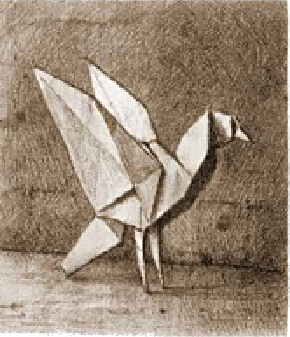
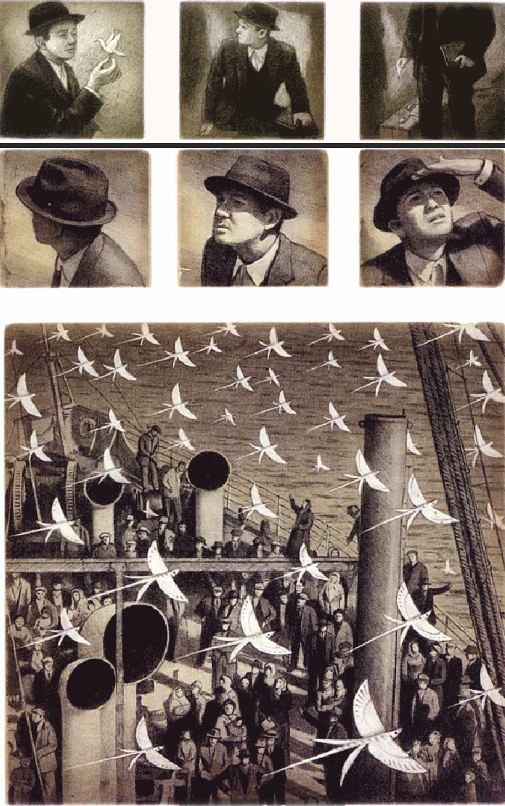
By the stranger looking behind or casting his gaze to the left, the panel implies that the past that is left behind creates a distance that is at the same time tangible, though no longer accessible. Tan connects a quick sequence here that shifts the direction to the opposite in the subsequent panels, thus making the (then) past yield to what lies ahead, what is directed to the right, what is the future. Just as in the first page, featuring a rightward-facing origami figure in the first panel (Figure 2), upon turning left the stranger encounters a crowd of strange-looking birds that resemble the origami figure (Figure 3). They jointly fly away towards the right, the future, whom the stranger later encounters again in the new land.
To this end, Tan repeatedly deploys these specific alignments of the characters. When the unknown protagonist bids farewell to his family, he tilts his head downwards, puts on his hat, as he faces the left side in the panel. After five additional panels, he bends down again, only this time to receive the suitcase that the daughter hands him. Unlike before, the protagonist is now oriented to the right. With the view into the future, the suitcase stresses the journey into the distant and foreign as a token of movement (Figure 4).
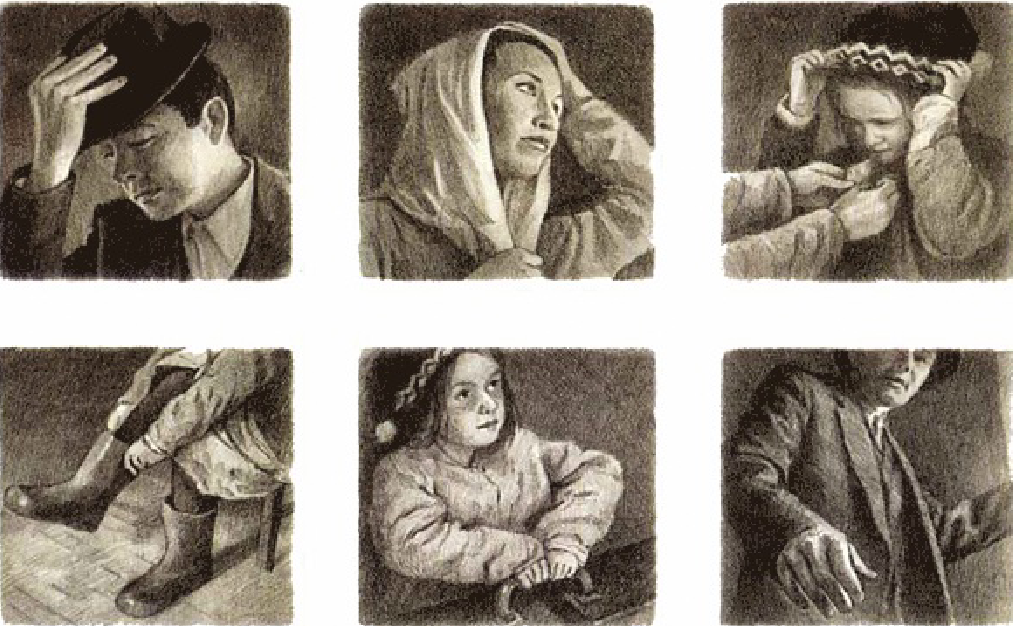
Furthermore, the visual announcements of the various flashbacks in Arrival, which portray the experiences of migration of various characters as they meet the protagonist in the new land, illustrate a glimpse into the past. An example of this is the character exchanging views with the protagonist and looking to the left. As with the previous examples, the panel concentrates only on the character, then zooms in closer with each subsequent panel. Direction of viewing plays an important role in Tan’s Arrival, placing the past and the future in immediate proximity. Similar to a photo album, the old is seemingly situated not that far back, but the new lays ahead as well – in Tan’s Arrival, the fantastically new. According to Golnar Nabizadeh, these fantastic aspects sustain “hope for the future […] through surreality that resides within the recognisable past […]” (Nabizadeh 204).
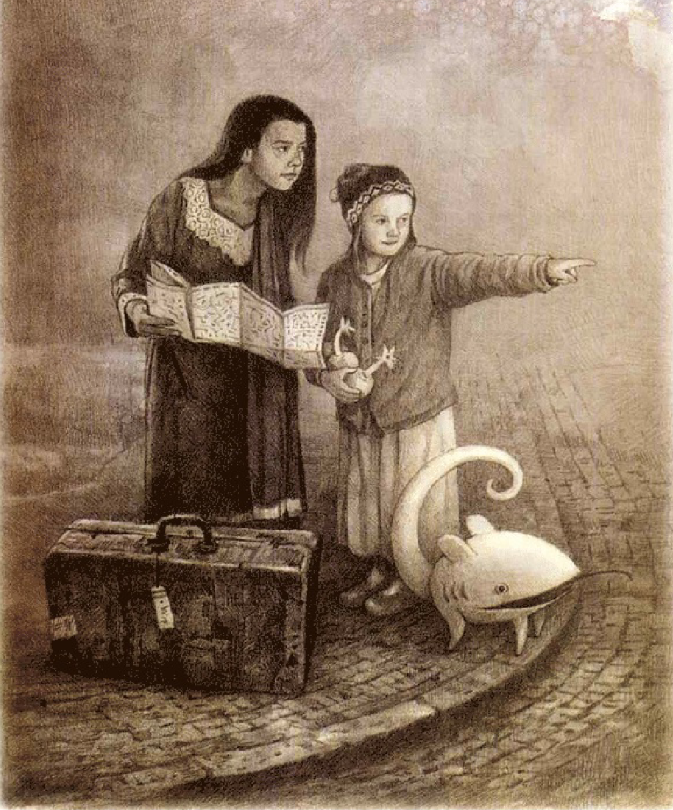
Accordingly, the last page of the graphic novel accentuates the direction of hope. In the one-page panel, the unnamed proagonist’s daughter, who has arrived in the new land, meets a rather perplexed looking migrant. With a suitcase on the ground and a map in her hand, the migrant gets assistance from the daughter on finding her way. Like the magical being accompanying them, the two look to the right while the daughter points her finger in that very direction – towards the future for the arrived migrant (Figure 5).
Works Cited
Ling, Chuan-Yao. “A Conversation with Illustrator Shaun Tan.” World Literature Today 82.5 (2008): 44-47
Tan, Shaun. “Strange Migrations.” n.d., www.shauntan.net/essays.
Tan, Shaun. The Arrival. Melbourne. Lothian, 2006.
Nabizadeh, Golnar. Departure and arrival: loss and mourning in literary migrant narratives. 2011. University of Western Australia, PhD dissertation. research-repository.uwa.edu.au/en/publications/departure-and-arrival-loss-and-mourning-in-literary-migrant-narra


